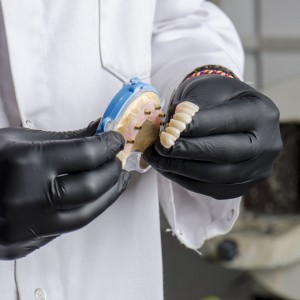
Is Implant cantilevered fixed dental prostheses a successful treatment in partially edentulous?
Co-authors: Storelli S, Del Fabbro M, Scanferla M, Romeo E
Giulia Palandrani
Implant placement can be limited by anatomical conditions that may be overcome with different solutions: reduced dimension implants, bone regeneration procedures or different prosthetic designs. One of the prosthetic solutions is the use of cantilevered prostheses. This is an option in areas with an unfavorable anatomy, or in patients that have limited financial means to afford complex treatments. The major risk in this type of rehabilitations is biomechanical, in fact the occlusal overload can lead to implant and/or prosthetic failure.
In this systematic review, divided in two parts and pulished in November 2018 on the Cinical Oral Implants Research, the focused question was: “In what clinical situations and with what implant systems are cantilevers a successful treatment modality?”
RESULTS
In the part I of this systematic review after an electronic search a total of nine papers were selected for partially edentulous patients. The estimated survival rate for 5–10 years was calculated to be 98.4% for the implants and 99.2% for the rehabilitations. Mechanical, technical and biological complications were reported with a cumulative 5–10 years complication rate of 28.66% and 26.57% for the patients and for the prosthesis, respectively. For single implant supporting 2-unit cantilever only two papers were included, therefore it was not possible to draw conclusions.
CONCLUSIONS
Based on these results it is possible to acknowledge the use of cantilevered rehabilitations in partially edentulous patients. Implant cantilevered fixed dental prosthesis appear to have a high survival rate in partially edentulous patients. Conversely single implant supporting 2-unit cantilever appear to have scarce evidence concerning the survival and rate of complications.
For additional informations:
Implant‐supported cantilevered fixed dental rehabilitations in fully edentulous patients: Systematic review of the literature. Part II
 Related articles
Related articles
Prosthodontics 31 October 2025
Rapid Prototyping Technologies and their Applications in Prosthodontics, a Review of Literature
The early computer-aided design/computer-aided manufacturing (CAD/CAM) systems were relied exclusively on subtractive methods.
Prosthodontics 13 October 2025
Periodontics, implantology, and prosthodontics integrated: the zenith‐driven rehabilitation
A customized treatment plan is important to reach results that will satisfy the patient providing esthetics, function, and long-term stability.
Prosthodontics 26 September 2025
This article aims to review the status, challenges, and directions of environmentally sustainable oral healthcare by focusing on the dental materials and procedures used in prosthodontics.
The concept of the minimal important difference (MID) of an oral health-related quality of life (OHRQoL) questionnaire has been proposed to refer to the smallest OHRQoL score difference considered to...
Prosthodontics 12 August 2025
Previous research regarding dental students has found modest predictive value in preclinical didactic course grades in predicting clinical performance, but systematic assessment of students’...
 Read more
Read more
Much like EMTs rushing to the scene after an accident, stem cells hurry to the site of a skull fracture to start mending the damage. A new finding has uncovered the signaling mechanism that triggers...
Products 05 November 2025
SimplyTest has launched a groundbreaking saliva-based test to detect high-risk strains of oral human papillomavirus (HPV), a major cause of oropharyngeal cancers.
News 05 November 2025
Perimetrics, Inc., a dental technology company pioneering quantitative diagnostics, announced today that the U.S. Food and Drug Administration (FDA) has granted clearance for the InnerView...
News 05 November 2025
On October 15, open enrollment for Medicare began nationwide. Hundreds of thousands of seniors in New Jersey will once again face the challenge of finding the right Medicare coverage, including the...
Digital Dentistry 04 November 2025
Digitalisation is an expanding field in dentistry and implementation of digital teaching methods in dental education is an essential part of modern education.















